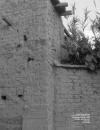Abstract
This paper studies the walls of mud in the cities of Chile and Cuyo (now Argentina) since the Spanish conquest untilthe late nineteenth century. From archives of original documents, a corpus of documents was built with veritable informationabout 400 walls of mud. The sources deliver data about the parts of these walls (foundations, mud walls,fences), including measures (length, height, thickness), building materials and molds (mud walls, gates, tampers).The relevance of mud walls as patio and home closures was detected. The link between mud walls and the developmentof small holdings, working culture and intensive agriculture in the region (vineyards and orchards) also standsout. The mud walls helped build the foundation for these activities in the region that currently represents one of themain centers of the world’s fruit growing and viticulture.Apuntes is registered under a Creative Commons Attribution 4.0 International Public License. Thus, this work may be reproduced, distributed, and publicly shared in digital format, as long as the names of the authors and Pontificia Universidad Javeriana are acknowledged. Others are allowed to quote, adapt, transform, auto-archive, republish, and create based on this material, for any purpose (even commercial ones), provided the authorship is duly acknowledged, a link to the original work is provided, and it is specified if changes have been made. Pontificia Universidad Javeriana does not hold the rights of published works and the authors are solely responsible for the contents of their works; they keep the moral, intellectual, privacy, and publicity rights.
Approving the intervention of the work (review, copy-editing, translation, layout) and the following outreach, are granted through an use license and not through an assignment of rights. This means the journal and Pontificia Universidad Javeriana cannot be held responsible for any ethical malpractice by the authors. As a consequence of the protection granted by the use license, the journal is not required to publish recantations or modify information already published, unless the errata stems from the editorial management process. Publishing contents in this journal does not generate royalties for contributors.


